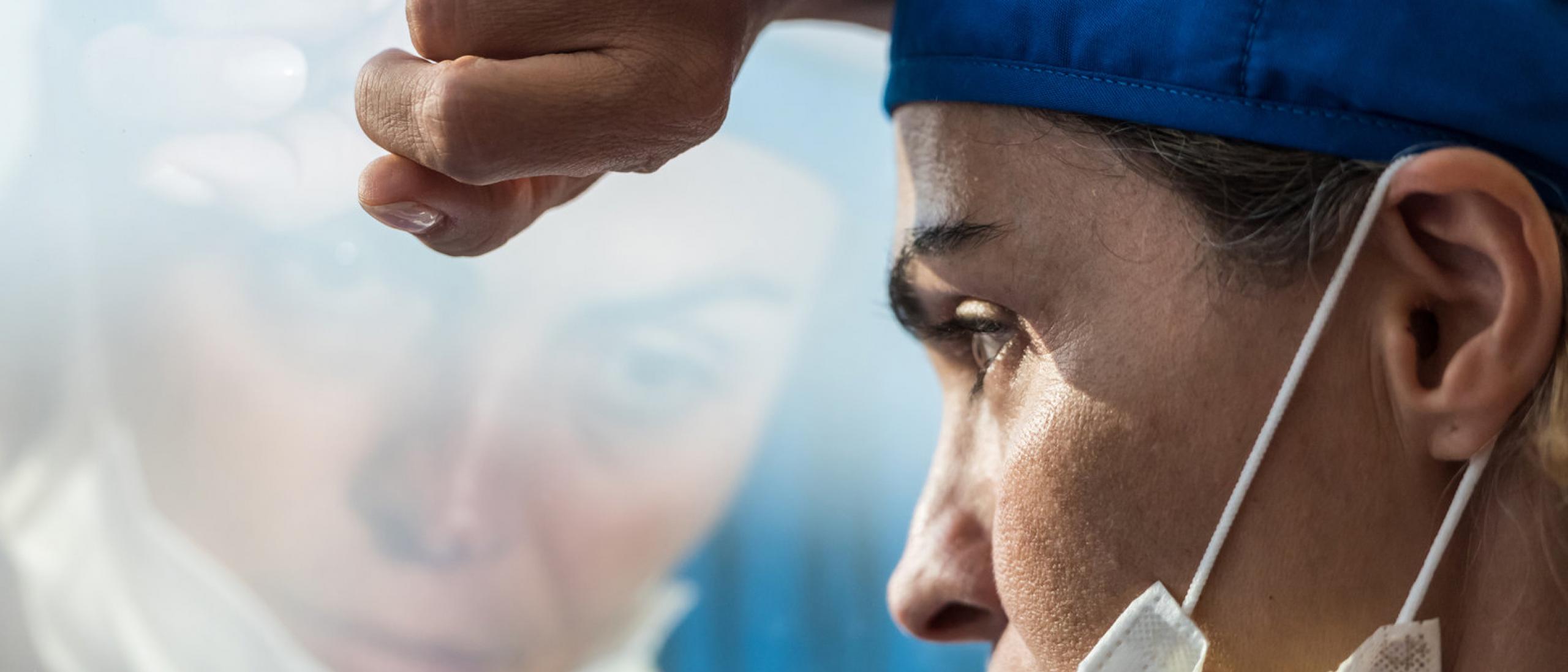

During the height of the COVID-19 pandemic in New York City, health care workers on the front lines had high levels of acute stress, anxiety, and depression, a study by researchers at Columbia University Irving Medical Center and NewYork-Presbyterian has found.
Levels of stress, anxiety and depression were particularly high among those with the greatest amount of patient contact and interaction.
Among the findings:
- More than half had high levels of acute stress.
- Nearly half screened positive for depressive symptoms.
- One-third had anxiety.
- Most had insomnia symptoms and experienced loneliness.
The findings were published online in the journal General Hospital Psychiatry.


“This is the largest study in the United States to document the psychological impact among clinicians working on the front lines at the height of the NYC COVID-19 pandemic,” says Marwah Abdalla, MD, assistant professor of medicine in the Center for Behavioral Cardiovascular Health at Columbia University, cardiac intensivist at NewYork-Presbyterian/Columbia University Irving Medical Center, and study leader.
“Our findings confirm what we suspected: Clinicians working in this environment experienced significant levels of acute stress and other psychological effects.”
Nurses had highest stress levels


The researchers analyzed data from 657 clinicians at NewYork-Presbyterian/Columbia University Irving Medical Center who were screened for stress, anxiety, and depression symptoms between April 9 and April 24 during the peak of the pandemic in New York City. More than half (375) of respondents were nurses and advanced practice providers.
Overall, 57% of participants — and 64% of nurses and advanced practice providers — said they had experienced symptoms of acute stress, such as nightmares, an inability to stop thinking about COVID-19, a feeling of being constantly on guard, and numbness or detachment from people or their surroundings. Acute stress symptoms that persist for more than a month can lead to post-traumatic stress syndrome (PTSD).
Although the environment took a psychological toll on all healthcare workers, nurses were particularly affected. The different responsibilities of nurses may partly explain the higher rates of positive acute stress screens and other impacts, as nurses spend more time delivering direct patient care.
Nearly half (48%) of all participants screened positive for depressive symptoms and one-third (33%) for anxiety.


Loneliness was pervasive
Insomnia and loneliness were also pervasive in this group (71% and 65%, respectively). “These were essential workers who were still going to work and interacting with patients and colleagues throughout the day,” Abdalla says, “so the high prevalence of loneliness is striking.”
Three out of four participants were highly distressed about the possibility of transmitting COVID-19 to loved ones. Most were highly distressed about the need to maintain social distance from family and friends and a lack of control and uncertainty during the pandemic.
“The health care workers had the double burden of caring for patients with COVID-19 and worrying about the possibility of getting loved ones sick,” says Abdalla. “The high prevalence of insomnia and loneliness among clinicians suggests that the acute stress of working in this environment was physically and emotionally exhausting and isolating, but we don’t know yet if this stress will have long-term consequences, and if so, whether the feeling that they were doing something meaningful and purposeful helps insulate them from this stress.”




Most engaged in stress-reducing behaviors
Most respondents reported the use of stress-reducing behaviors, most commonly physical exercise but also talk therapy, virtual support groups, and religious/spiritual practices. Most expressed interest in having access to an individual therapist.
“Our findings highlight the need to study the effectiveness of the wellness resources that were available to the health care workers during the study period and determine if additional resources may be needed to better protect them during the next health crisis that may arise in New York City,” Abdalla says.
Abdalla and her colleagues are currently doing a follow-up survey to see if these clinicians’ psychological symptoms, coping strategies, and sense of optimism change over time.

